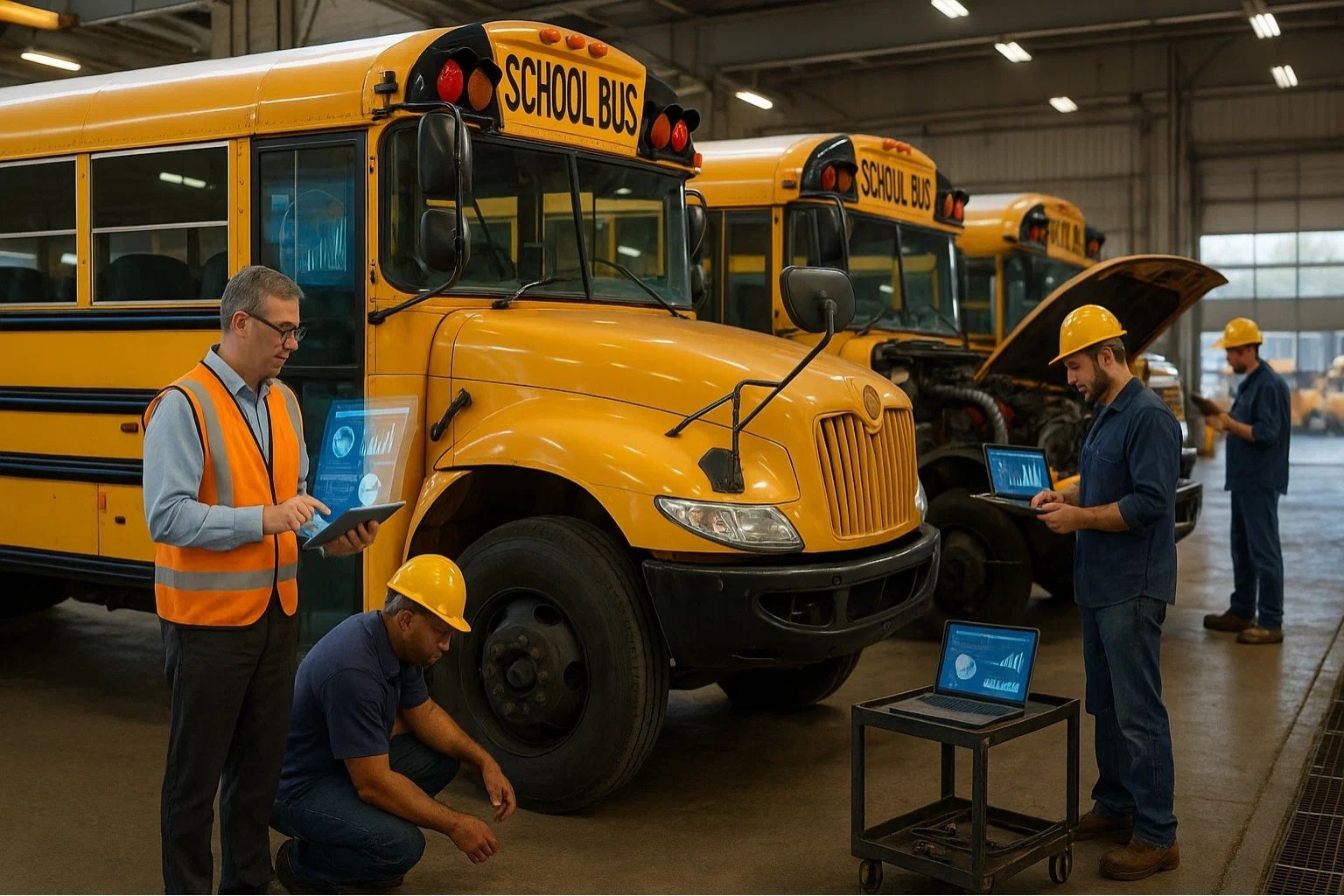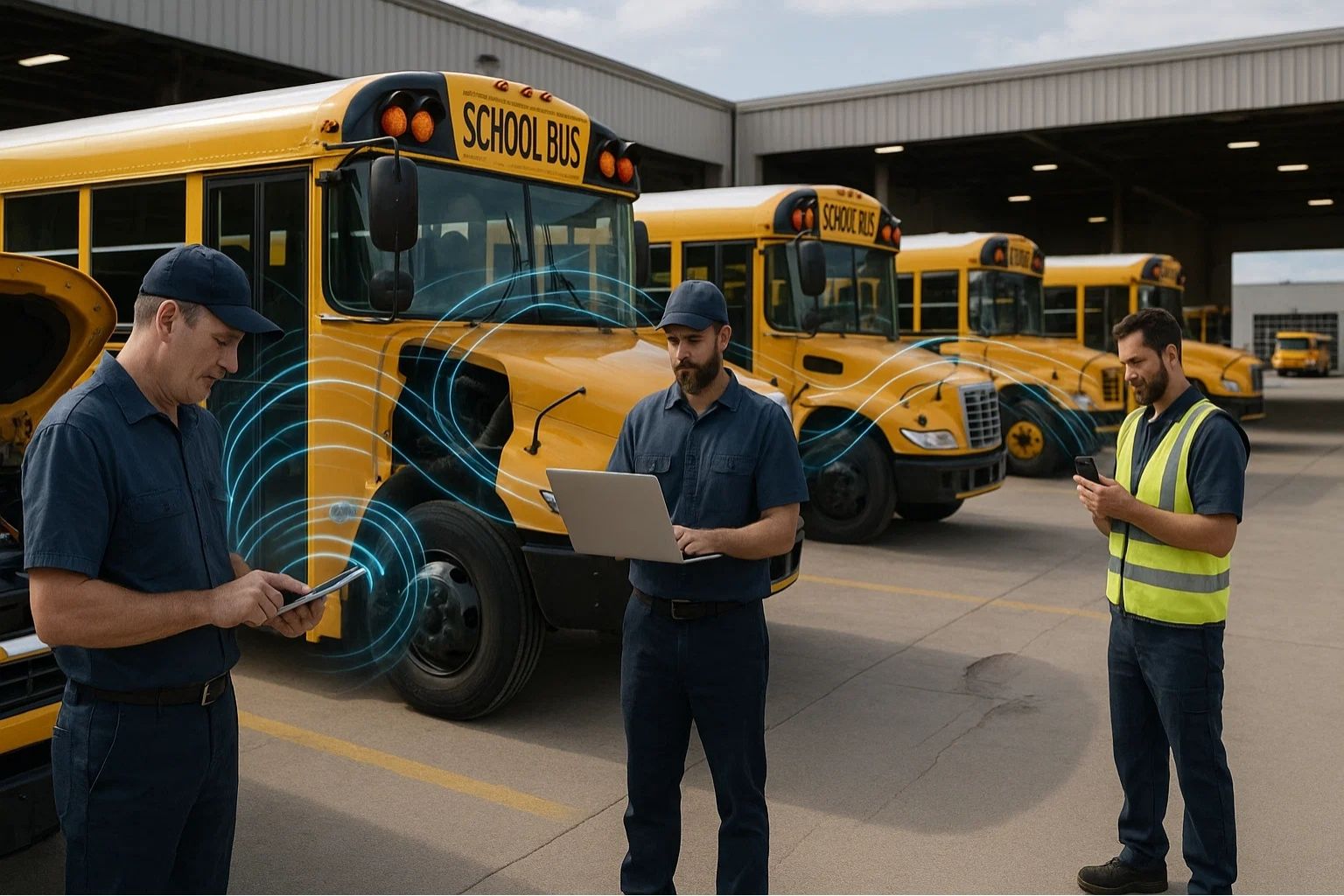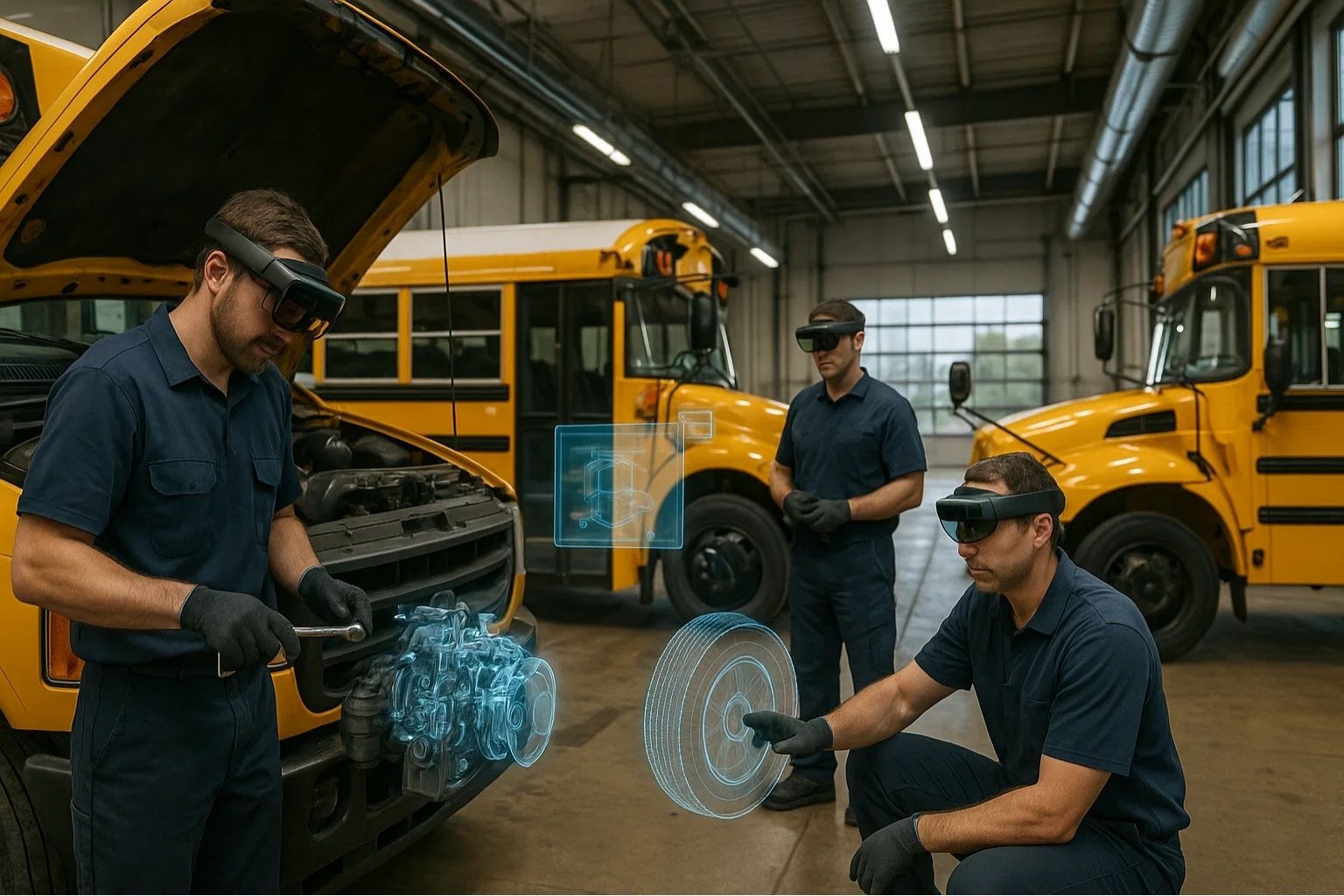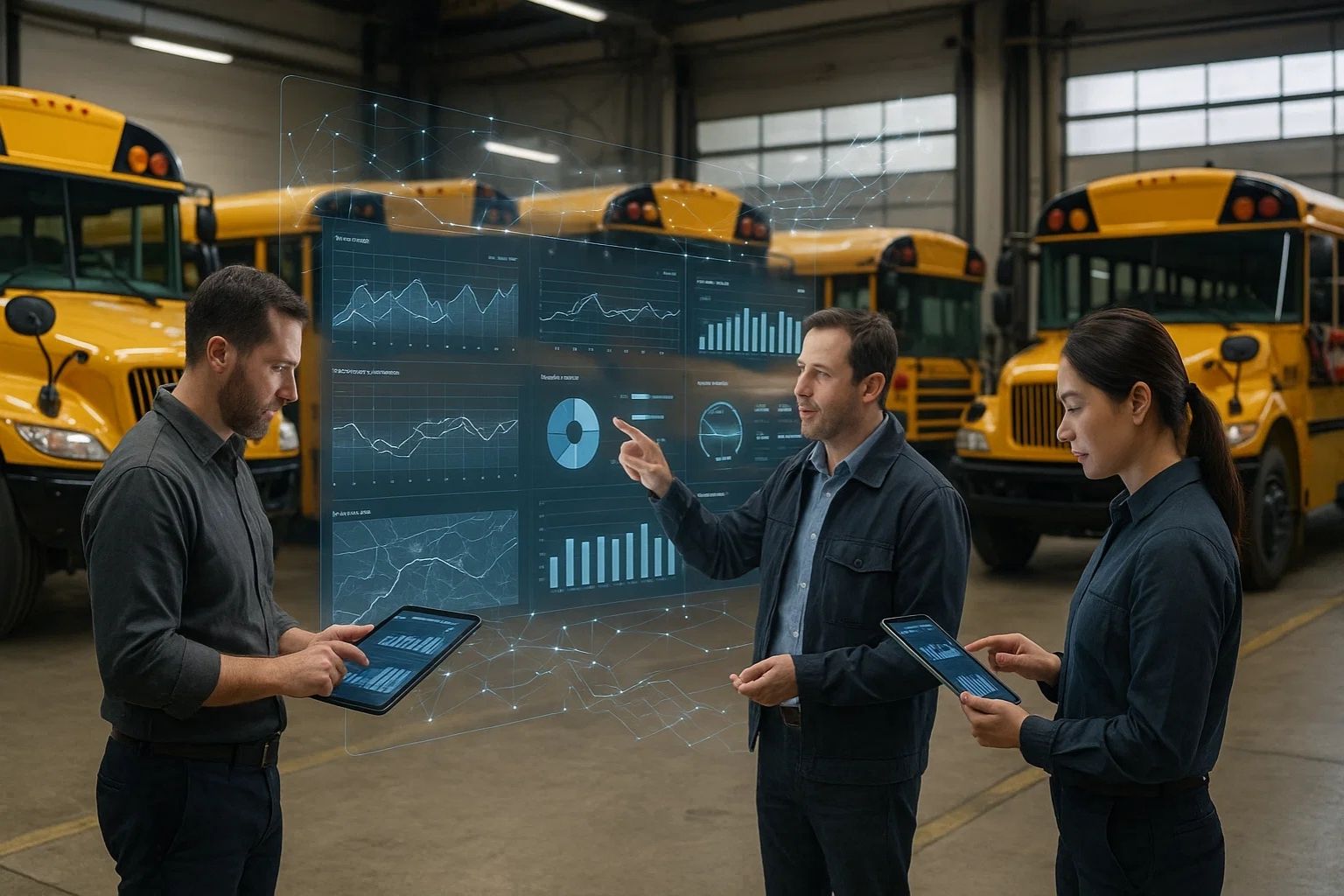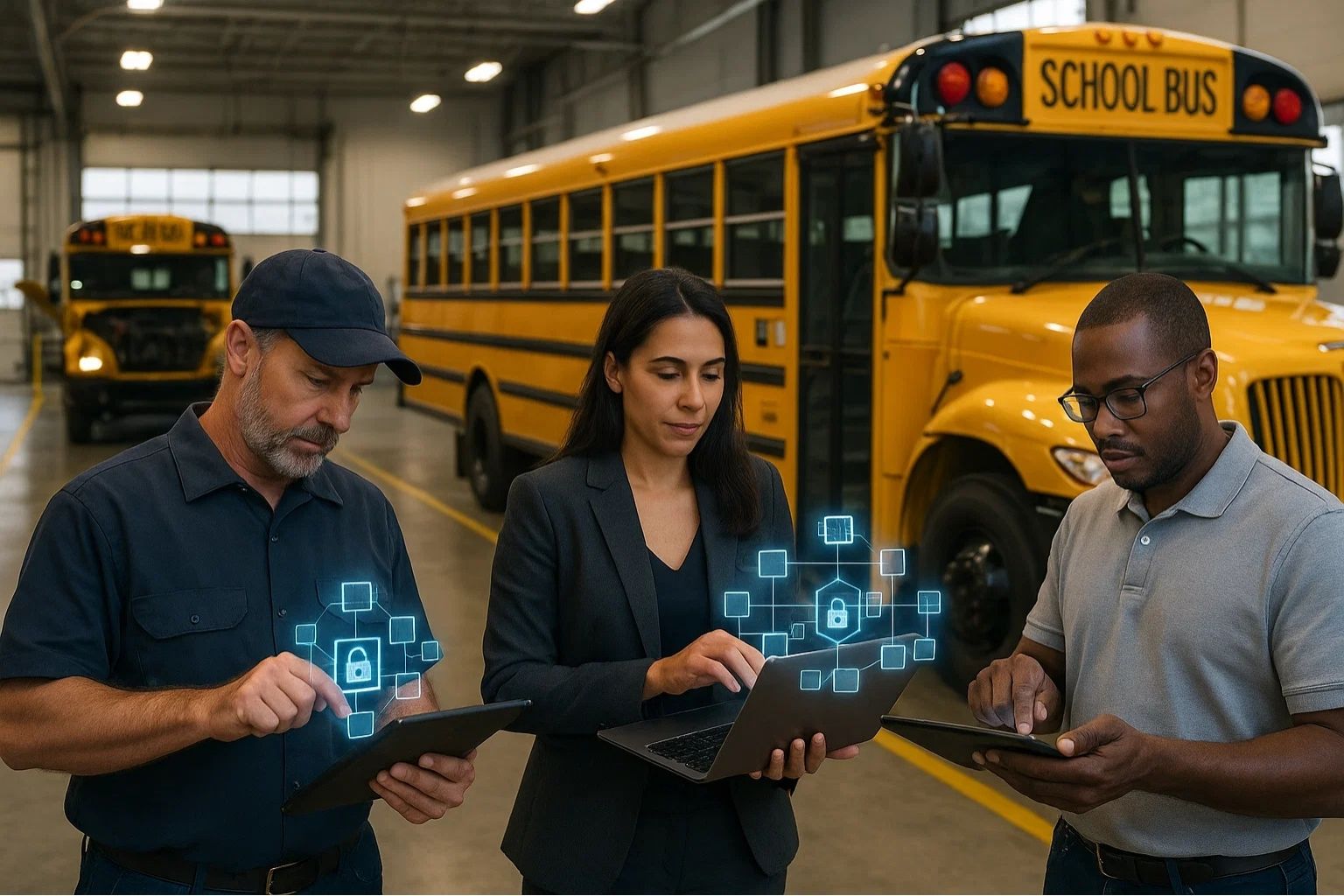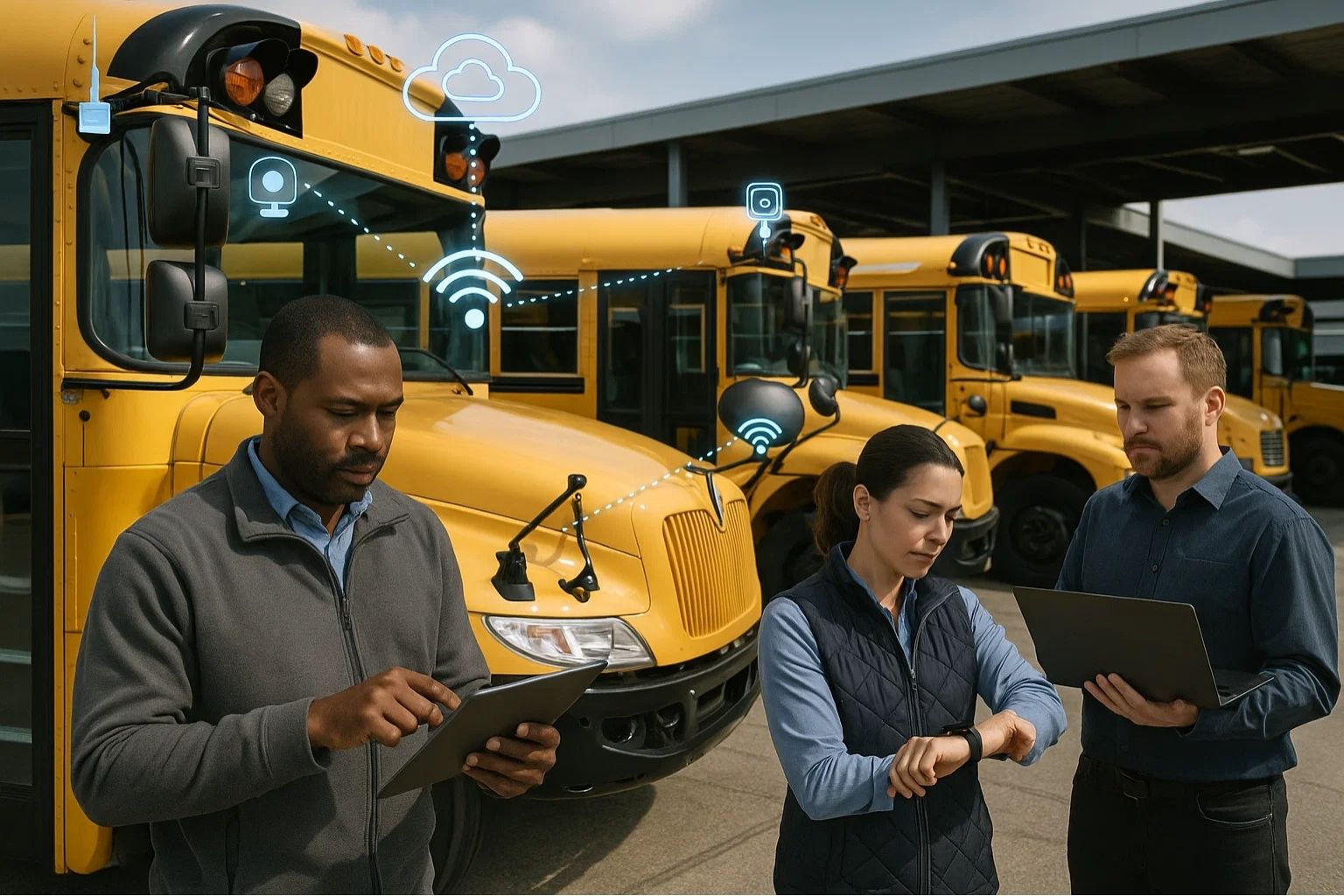Machine learning has emerged as a revolutionary force in modern bus fleet maintenance, transforming traditional reactive approaches into intelligent predictive systems that save millions in operational costs. Bus CMMS platforms powered by machine learning algorithms analyze vast datasets from thousands of vehicles, identifying patterns and predicting maintenance needs with unprecedented accuracy that human analysis could never achieve.
The integration of machine learning into fleet maintenance operations represents a fundamental shift in how US bus operators approach vehicle reliability and cost management. By processing real-time sensor data, historical maintenance records, and environmental factors simultaneously, ML-powered systems detect subtle anomalies that indicate developing problems weeks before they become critical failures. This predictive capability transforms maintenance from a reactive expense into a proactive investment in fleet reliability.
Fleet operators implementing machine learning through advanced Bus CMMS solutions report remarkable improvements across all operational metrics. Unplanned downtime decreases by 65-75%, maintenance costs drop by 30-40%, and vehicle lifespan extends by 20-25%. These dramatic improvements demonstrate machine learning's transformative power in modernizing bus fleet maintenance for the digital age.
Understanding Machine Learning in Fleet Maintenance
Machine learning within Bus CMMS platforms operates through sophisticated algorithms that continuously learn from your fleet's operational data. Unlike traditional rule-based systems that follow predetermined thresholds, machine learning models adapt and evolve based on actual performance patterns unique to your vehicles and routes.
Core ML Technologies
Neural networks process multiple data streams simultaneously, identifying complex relationships between seemingly unrelated variables. For example, the system might discover that specific combinations of weather conditions, route characteristics, and driving patterns accelerate brake wear in ways that traditional analysis would never detect. This deep pattern recognition enables maintenance teams to intervene precisely when needed, maximizing component life while preventing failures.
Ensemble learning methods combine multiple machine learning models to create robust predictions that account for various failure scenarios. Random forests, gradient boosting, and deep learning networks work together within modern Bus CMMS platforms, each contributing unique insights that improve overall prediction accuracy to levels exceeding 90% for critical components.
Data Processing Capabilities
- Real-time Analysis: Processes millions of data points per second from fleet sensors
- Pattern Recognition: Identifies failure signatures across diverse component systems
- Anomaly Detection: Flags unusual behaviors indicating potential problems
- Predictive Modeling: Forecasts maintenance needs 30-90 days in advance
- Adaptive Learning: Continuously improves accuracy based on maintenance outcomes
Machine Learning Applications in Bus Systems
The practical applications of machine learning in bus maintenance extend across every major vehicle system. Bus CMMS platforms leverage ML algorithms to monitor, analyze, and predict maintenance needs for engines, transmissions, braking systems, HVAC units, and electrical components with remarkable precision.
Engine Performance Optimization
Combustion Analysis
ML algorithms analyze combustion patterns to detect developing engine issues before performance degrades
Fuel System Monitoring
Predictive models identify injector problems and fuel pump failures weeks in advance
Emission Control
Machine learning ensures compliance by predicting emission system maintenance needs
Transmission Intelligence
Machine learning excels at predicting transmission failures by analyzing shift patterns, temperature profiles, and vibration signatures. The algorithms detect subtle changes in gear engagement timing, torque converter behavior, and clutch pack wear that human technicians might miss during routine inspections. Advanced ML models achieve 95% accuracy in predicting transmission problems 45-60 days before failure, enabling scheduled repairs that cost 60% less than emergency replacements.
The system also optimizes transmission performance by learning from driver behavior patterns and route characteristics. It recommends specific maintenance interventions based on actual usage patterns rather than generic time-based schedules, extending transmission life by 30-40% while maintaining optimal performance.
Unlock Machine Learning's Full Potential
Transform your fleet maintenance with AI-powered predictive analytics today.
Getting StartedBook a Demo
Predictive Analytics and Failure Prevention
Machine learning transforms raw data into actionable predictive insights that prevent costly failures before they occur. Bus CMMS platforms employ sophisticated predictive analytics models that consider hundreds of variables simultaneously, creating comprehensive failure probability assessments for every vehicle component.
Failure Prediction Methodology
- Historical Pattern Analysis: ML algorithms study past failures to identify precursor patterns
- Sensor Fusion Technology: Combines data from multiple sensors for comprehensive analysis
- Environmental Correlation: Factors in weather, road conditions, and seasonal variations
- Usage Pattern Integration: Considers route difficulty, passenger loads, and driving styles
- Component Interaction Modeling: Understands how component failures cascade through systems
The predictive models continuously refine their accuracy through reinforcement learning, comparing predictions against actual outcomes. This feedback loop ensures the system becomes increasingly accurate over time, with mature implementations achieving prediction accuracies exceeding 92% for critical safety components.
Real-Time Decision Support Systems
Machine learning enables real-time decision support that transforms how maintenance teams respond to developing issues. Bus CMMS platforms provide instant recommendations based on current vehicle conditions, available resources, and operational priorities.
Intelligent Prioritization
When multiple vehicles require attention, machine learning algorithms prioritize maintenance activities based on failure probability, safety impact, and operational requirements. The system considers factors like upcoming route assignments, parts availability, and technician schedules to recommend optimal maintenance sequencing that minimizes service disruption while maximizing fleet availability.
Dynamic risk scoring continuously updates as new data arrives, ensuring maintenance teams always focus on the most critical issues. ML-powered prioritization reduces emergency repairs by 70% while improving overall fleet reliability by 45%.
Resource Optimization
Parts Inventory Management
ML predicts parts demand 60-90 days ahead, optimizing inventory levels
Technician Scheduling
Algorithms match maintenance needs with available expertise and capacity
Workshop Utilization
Optimizes bay assignments and maintenance timing for maximum efficiency
Cost Reduction Through Machine Learning
The financial impact of machine learning on bus maintenance operations extends far beyond simple repair cost savings. Bus CMMS platforms powered by ML deliver comprehensive economic benefits that transform maintenance from a cost center into a value driver.
Quantifiable Financial Benefits
- Maintenance Cost Reduction: 30-40% decrease through optimized scheduling and prevention
- Downtime Minimization: Each prevented breakdown saves $8,000-20,000 in lost revenue
- Parts Inventory Savings: 25% reduction in carrying costs through predictive ordering
- Labor Productivity: 35% improvement through better planning and resource allocation
- Extended Vehicle Life: 20-25% longer service life reduces capital replacement costs
- Fuel Efficiency: 10-15% improvement through optimal engine performance maintenance
Return on investment for machine learning implementations typically occurs within 8-12 months, with cumulative savings growing exponentially as the system learns and improves. Fleet operators report total cost reductions of $500,000-$2 million annually depending on fleet size.
Implementation Best Practices
Strategic Implementation Approach
- Data Infrastructure: Establish robust data collection from all vehicle systems
- Phased Deployment: Start with critical components before expanding coverage
- Staff Training: Ensure teams understand ML-driven insights
- Process Integration: Align ML predictions with existing maintenance workflows
- Continuous Monitoring: Track performance metrics and system accuracy
Successful machine learning implementation through Bus CMMS requires commitment to data quality and process discipline. Organizations that invest in comprehensive training and change management report 50% faster ROI realization and 30% higher user adoption rates compared to those taking ad-hoc approaches.
Data Quality Requirements
Machine learning models require consistent, accurate data to deliver reliable predictions. Fleet operators must ensure sensor calibration, regular data validation, and comprehensive maintenance record keeping. Quality data inputs directly correlate with prediction accuracy, making data governance a critical success factor.
Future of Machine Learning in Fleet Maintenance
The evolution of machine learning technology continues to unlock new possibilities for bus fleet maintenance. Bus CMMS platforms are incorporating advanced capabilities like computer vision for automated inspection, natural language processing for technician notes analysis, and federated learning for fleet-wide intelligence sharing.
Emerging Technologies
Computer Vision Inspection
Automated visual inspection using ML-powered image analysis
Digital Twin Modeling
Virtual vehicle replicas for predictive simulation
Quantum ML Processing
Next-generation algorithms for complex multi-variable analysis
Industry Transformation
Machine learning is driving a fundamental transformation in how the bus transportation industry approaches maintenance. Predictive capabilities will soon extend to entire fleet lifecycle management, from procurement decisions based on predicted maintenance costs to retirement timing optimized through ML analysis. Forward-thinking operators implementing these technologies today position themselves for competitive advantages that will define industry leaders for decades.
Integration with IoT and Telematics
Machine learning reaches its full potential when integrated with comprehensive IoT sensor networks and advanced telematics systems. Bus CMMS platforms seamlessly connect with existing vehicle technology to create intelligent maintenance ecosystems that operate autonomously.
Sensor Network Architecture
Modern buses contain hundreds of sensors monitoring everything from engine parameters to passenger door cycles. Machine learning algorithms process this continuous data stream, identifying correlations and patterns impossible for human analysts to detect. The integration of edge computing enables real-time processing directly on vehicles, providing instant alerts for critical issues while reducing data transmission costs.
Advanced telematics integration allows ML models to consider external factors like traffic patterns, weather conditions, and route topography when predicting maintenance needs. This holistic approach improves prediction accuracy by 25-30% compared to vehicle-only data analysis.
Frequently Asked Questions
How does Bus CMMS machine learning technology differ from traditional maintenance software?
Bus CMMS machine learning technology fundamentally differs from traditional maintenance software by learning and adapting rather than following static rules. While conventional systems trigger maintenance based on fixed schedules or mileage thresholds, Bus CMMS ML algorithms analyze actual vehicle conditions, usage patterns, and environmental factors to predict exactly when maintenance is needed. This intelligent approach reduces unnecessary maintenance by 40% while preventing 75% more failures than traditional methods. The system continuously improves its predictions, becoming more accurate with every maintenance cycle. Bus CMMS also provides actionable insights explaining why maintenance is recommended, empowering technicians with knowledge rather than just work orders. This transparency, combined with 92% prediction accuracy, makes Bus CMMS the superior choice for modern fleet maintenance.
What ROI can fleet operators expect from implementing Bus CMMS with machine learning?
Fleet operators implementing Bus CMMS with machine learning typically achieve ROI within 8-12 months, with ongoing benefits multiplying over time. The platform delivers immediate cost savings of 30-40% in maintenance expenses through optimized scheduling and prevented failures. Beyond direct savings, Bus CMMS ML technology increases fleet availability by 25-30%, generating additional revenue through improved service reliability. Parts inventory costs decrease by 25% through predictive ordering, while labor productivity improves by 35% with better planning. The cumulative financial impact ranges from $500,000 to $2 million annually for typical mid-size fleets. Most importantly, Bus CMMS extends vehicle lifespan by 20-25%, delaying costly replacements and maximizing capital investment returns. These documented benefits, combined with improved safety and passenger satisfaction, make Bus CMMS an essential investment for competitive fleet operations.
Start Your Machine Learning Journey Today
Join industry leaders using intelligent technology to revolutionize fleet maintenance.
Getting StartedBook a Demo
Conclusion
Machine learning has transformed bus fleet maintenance from a reactive necessity into a strategic competitive advantage. Through advanced Bus CMMS platforms, fleet operators now harness the power of predictive analytics, real-time decision support, and intelligent resource optimization to achieve unprecedented levels of operational efficiency.
The documented benefits speak for themselves: 65-75% reduction in unplanned downtime, 30-40% decrease in maintenance costs, and 20-25% extension in vehicle lifespan. These improvements translate directly into enhanced service reliability, improved passenger satisfaction, and significant competitive advantages in the evolving transportation landscape.
As machine learning technology continues to advance, early adopters of intelligent maintenance systems position themselves at the forefront of industry innovation. The question is no longer whether to implement machine learning in fleet maintenance, but how quickly organizations can embrace this transformative technology to secure their competitive future.
Ready to Transform Your Fleet Maintenance?
Discover how machine learning-powered Bus CMMS can revolutionize your operations.

